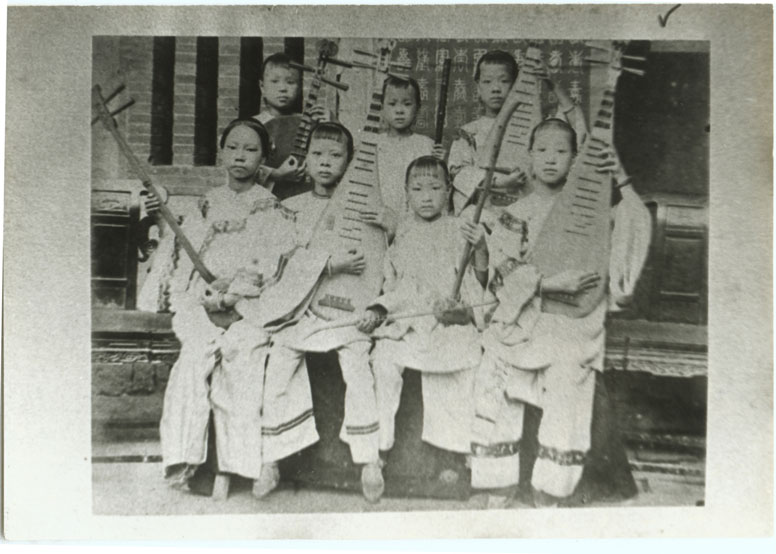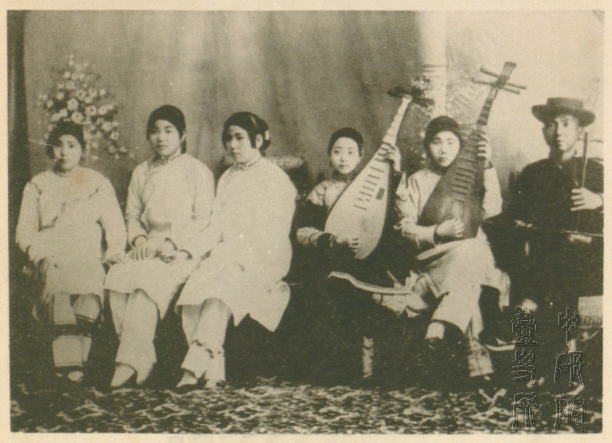TELDAP Collections
| Fading Into Insignificance After the Songs Were Sung—The Taiwanese Geishas |
|
During the Japanese colonial period, Taiwanese women often worked as bus drivers, bus conductors, nurses, telephone operators, tea pluckers, weavers, and so forth. However, one popular career that has almost been consigned to the dustbin of history is the geisha. The word “geishas” often calls to mind prostitutes paid to engage in sex with clients. However, the traditional geisha profession was purely for entertainment. Geishas had to study poetry, literature, and traditional songs at a young age. They were expected to compose poems and sing songs with clients, so the success of their career depended entirely on their artistic and social skills. Not every girl could become a successful geisha, and not every client could afford the service of a geisha. If a client wanted to begin a sexual relationship with a gifted geisha, he had to pay her a number of visits and wait until a friendship developed between them. Only then would she agree to embrace a more intimate intercourse. It was not until the decline of the geisha industry that girls began to sell sex.
The Taiwanese geisha industry thrived in Dadaocheng (nowadays Taipei) and Tainan between the mid-nineteenth century and the end of Japanese rule. During the golden years of Dadaocheng geishas (in the 1920’s), there were about 300 female entertainers. The number dropped to 80 in 1935. In those days, Taiwan was a rapidly-growing agrarian society with an uneven ratio of men and women. To eke out a living, impoverished families had to sell their daughters into the geisha industry. The transaction was irreversible. Once a deal was signed, the girl could not be redeemed. Some girls were first sold as adopted daughters, and then later sold again to geisha houses by their adopted families.
 Young geishas receiving musical training
(Source: Institute of Taiwan History, Academia Sinica)
 Geishas playing pipa, a four-stringed Chinese musical instrument
Source: Institute of Taiwan History, Academia Sinica)
With regard to the training of geishas during the Japanese colonial period, young girls had to go to elementary school for six years of compulsory education before beginning their apprenticeship. Experienced masters were hired to teach them traditional Chinese music, including beiguan, nanguan, luantan, and Peking opera. For a professional geisha, mastering these forms of theatrical music was a minimum requirement. In addition to singing, the girls also had to learn how to play pipa. However, just holding a pipa was physically demanding for a ten-year-old girl. Su Taixu (Note 1) once depicted this situation in his verse: “With a little body as tall as the pipa, she struggles to hold the instrument and learn singing.” Another aspect of required training was the study of poetry at a traditional private school.
 Geishas playing pipa and singing songs at a banquet
(Source: Institute of Taiwan History, Academia Sinica)
 Dressed-up geishas on floats at a temple fair
(Source: Institute of Taiwan History, Academia Sinica)
Once a geisha passed the examination and was licensed to work independently, she would be put under the administration of the governmental office “kenban,” which was responsible for the allocation of geishas and tax collection. At that time, men of letters constantly mingled with geishas. Geishas were commonly invited to the Jiangshan Hotel to pour wine and sing for guests. After the banquet, the guests would head over to the geisha house for another period of entertainment. It is clear from the manuscript of Ye Rongzhong’s diary that he once worked on The Geisha in Taipei. In addition, both the 369 Tabloid and the Fengyuebao once held beauty pageants for famous geishas all over Taiwan. Under the rule of the Japanese, geisha houses were a favorite haunt of Taiwanese men of letters and rich merchants, and a relationship based on mutual sympathy developed between these men and gifted geishas. They were bonded together by Chinese culture. A wealth of poetry and love affairs arose from such interactions.
If a popular geisha was fortunate enough to meet her true love, she was free to pursue marriage or retirement and separate herself from the geisha community permanently. Some senior geishas became the proprietresses of geisha houses, adopting a number of girls and continuing on with their geisha occupations. Some geishas retreated into religion; some committed suicide; some died after failed elopements. Some geishas struggled in the vicissitudes of their trade until the end of their lives, leaving behind nothing but deep sighs and futile dreams.
Notes:
1. Su Taixu, a.k.a. Su Dongyue (1902-1957), a native of Shanhua, Tainan, and the founder of Danru Poetry Club
References:
Qiu Xuling. (1999). The Grace of Taiwan Geisha. Taipei City: Yushanshe.
Chen Yingshi. (2010). On the Geisha House and the Geisha Culture in the Dadaocheng Community during the Japanese Occupation Period. Taipei Historical Documents Quarterly, 173, 37-73.
|












